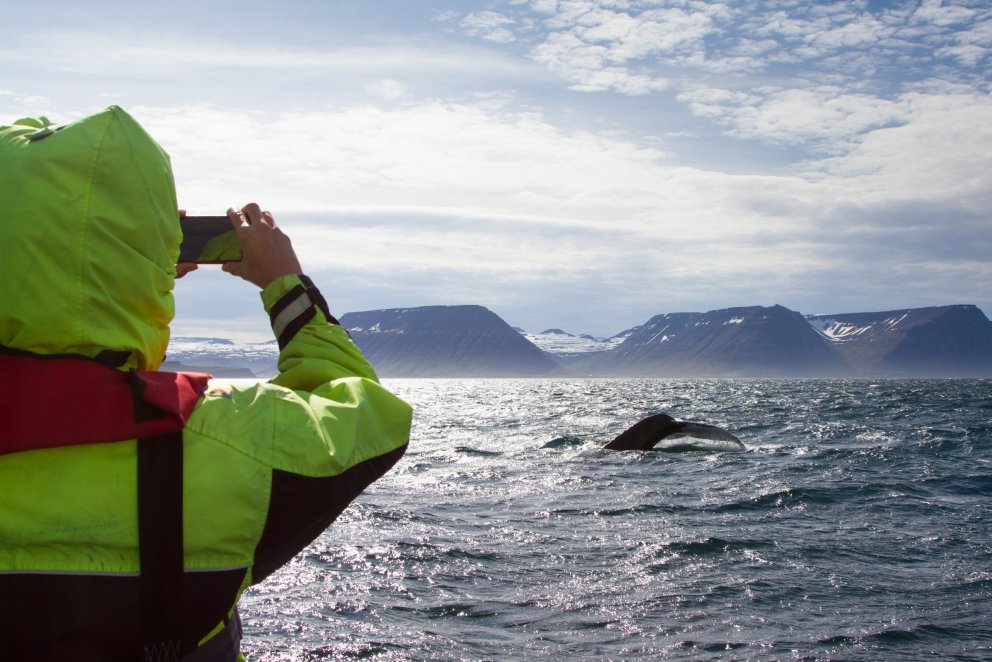There is plenty of wildlife in the Westfjords but most visitors get excited over the arctic foxes, whales and birdlife.
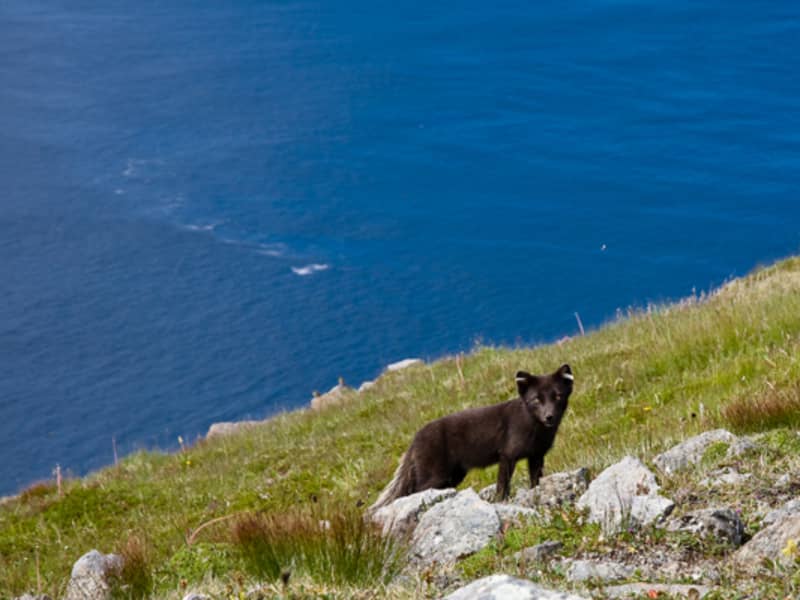
Arctic Fox
The Arctic fox is the only truly native land mammal in Iceland. It got stranded on the island after the last Ice Age and survived on birds, bird eggs, berries, seaweed and various other foods. Over the millennia the Icelandic Arctic fox has become genetically unique: the Vulpes lagopus fuliginosus subspecies. They are white in winter and grey in summer. The Hornstrandir nature reserve in the Westfjords is the only place in Iceland where the Arctic fox is completely protected from hunting; which means they are a common sight and unusually tame.
View
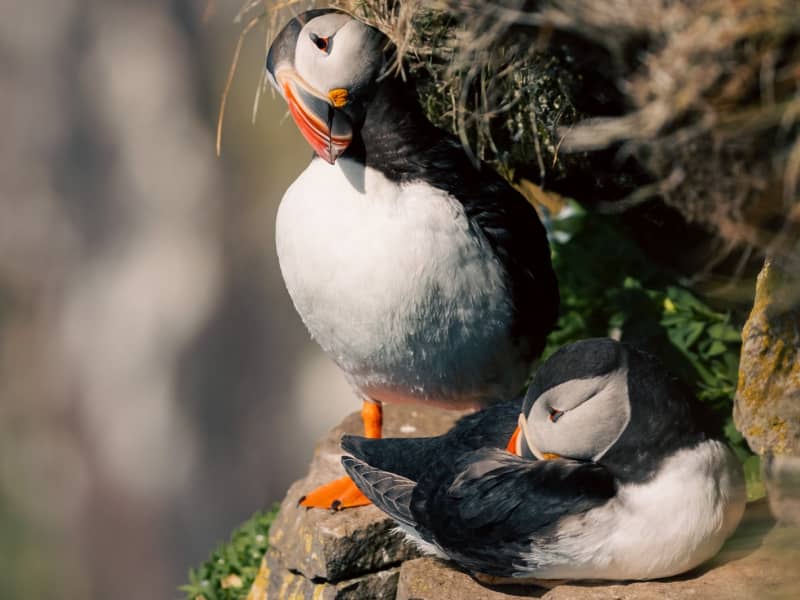
Látrabjarg
One of Europes biggest bird cliffs, a home to birds in unfathomable numbers. This westernmost point of Iceland is really a line of several cliffs, 14 kilometres long and up to 441 m high. And it’s as steep as it gets, dizzyingly so. Safe from foxes, the birds are fearless, and provide stunning photographic opportunities from close range. The puffins are the ones frequenting the grassy, higher part of the cliffs.
But look out, the edges are fragile and loose and the fall is high. Látrabjarg is thus deservedly the most visited tourist attraction in the Westfjords. The cliffs are easily accessible by car and when you’re there, a walk along the cliffs awaits. The whirling sensation will not fade, and neither will the memories.
View
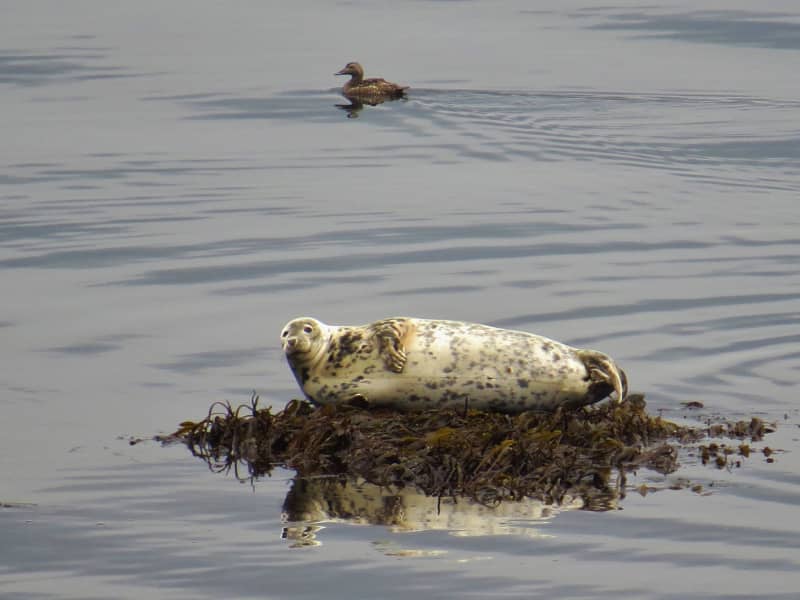
Seals
Two species of seal can be seen consitently throughout the Westfjords area. The "land-seal" is the most popular one and can be seen all around the Westfjords during all seasons. It is common to see them along the shoreline, often lying upon a flat rock enjoying the sun. Sometimes you can se them in the sea close to shore, curiously looking at what is happing on land.The "Útselur" (eng. deep sea seal) is more difficult to spot as it stays off shore for longer periods. It is bigger than the "landseal", 2,5m and weighing over 300kg.More species of seals can been seen around the Westfjords although they are not as common as those mentioned above. Long ago a walrus was spotted on shore in the Westfjords, but that is a very uncommon sight here nowadays.Seals are generally lying at the shoreline during low tide, as they are out hunting during hightide. Wind and sun condition can also affect how they gather at the shoreline, decresing the oppertunity of seeing some seals.
View
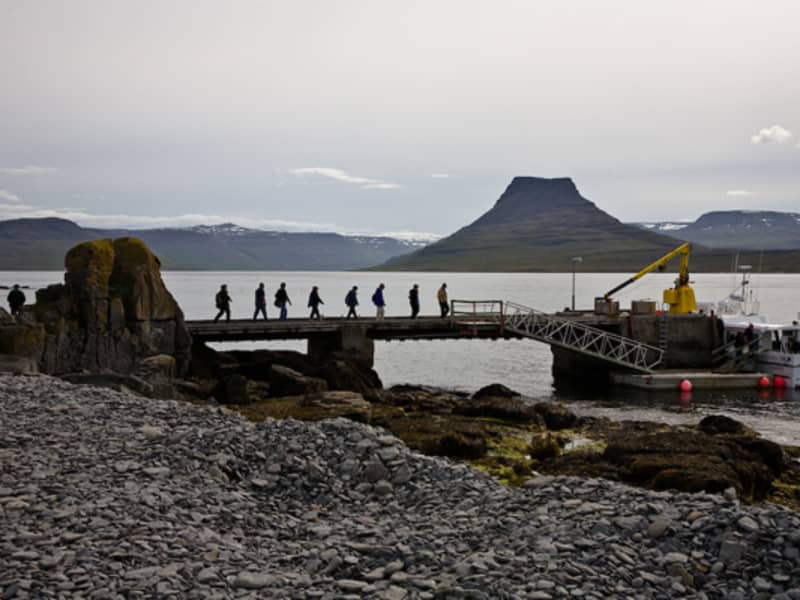
Vigur
Vigur is one of three islands in Ísafjarðardjúp, named for its spear-like shape. The island's distinctive wildlife makes it a favorite among travelers.
Puffins, eiders, guillemots, and arctic terns abound on Vigur, drawing many visitors. Puffins, often called the penguins of the north, nest in burrows that cover much of the island. To avoid collapsing these burrows, travelers must stick to designated paths. Despite being clumsy fliers, puffins impress visitors by expertly stacking their beaks with sand eels or small fish to feed their chicks.
In contrast, arctic terns are fiercely protective and will aggressively defend their territory from intruders, though holding a stick above one's head usually keeps them at bay. Eiders and humans coexist harmoniously on the island; eiders nest near human dwellings, gaining protection, while people collect the valuable eiderdown from their nests.
In Vigur you find the smallest post office in Iceland, as well as the only windmill and beautifully renewed houses.
To get to Vigur, there is a daily boat tour from Ísafjörður.
View

